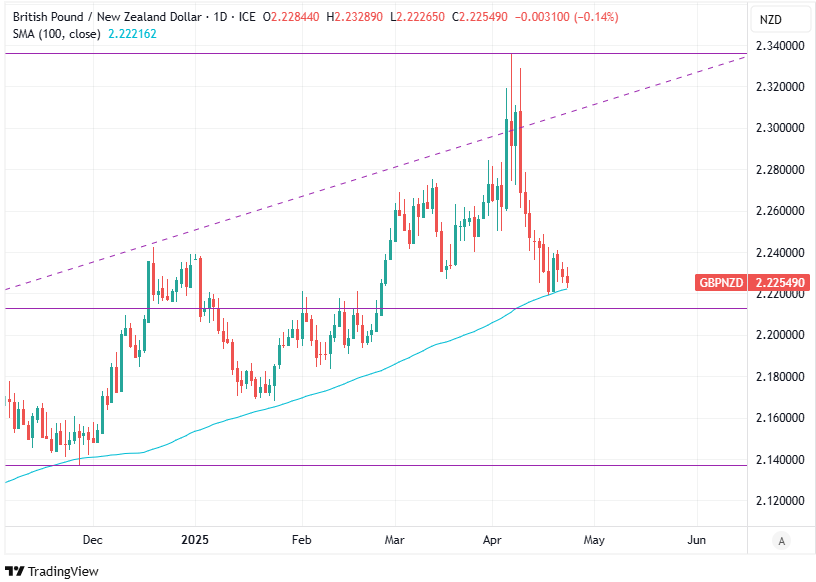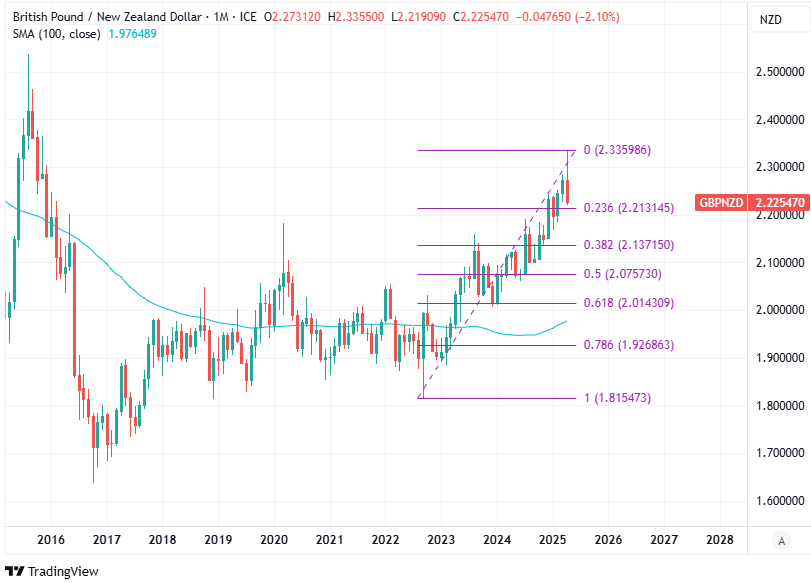
Pine timber being exported from Wellington, New Zealand. Photo by James Anderson, World Resources Institute.
The Pound to New Zealand Dollar exchange rate has receded from post-referendum highs in recent trade and could be set for some consolidation within a rough 2.2131 to 2.2467 range through the days ahead as markets process a cacophonic array of policy-related statements coming from Washington.
GBP/NZD has traded within a narrow range since the eve of Passover, having receded from near 2.3359 and its highest level since before the 2016 Brexit referendum in the wake of US President Donald Trump’s “Liberation Day,” tariff announcement, which weighed heavily on the US Dollar in the intervening period.
The pair was little changed late on Tuesday when the US Dollar rallied after Trump walked back his earlier suggestions that Federal Reserve Chairman Jerome Powell could be fired over the current level of interest rates, and after the Treasury Secretary reportedly suggested a trade deal with China is at hand.
“The Kiwi is certainly holding its own in a volatile environment. Indeed, NZD/AUD is at its highest level since February last year, even though the AUD, like the Kiwi, has more than made back its ground against the USD after reflexively plummeting on the initial tariff announcements,” says Sharon Zollner, chief economist at ANZ.

Above: GBP/NZD shown at daily intervals with selected moving average and Fibonacci retracements indicating possible areas of support. Click for closer inspection.
Earlier gripes over the Fed came amid an extended period of adverse reactions to the “Liberation Day” tariff announcement of April 7, which led to sometimes-simultaneous declines in stocks, bonds and the US Dollar.
GBP/NZD has long had a positive correlation with the broad US Dollar and that suggests it would struggle to rise much in the near-term if the market remains leery of the greenback over the coming days, while also implying that any further recovery of the US currency would be supportive of the pair.
The potential exception to this would be in the event of further simultaneous declines in the US stock, bond and currency markets as those saw Sterling underperform alongside the US Dollar and Norwegian Krone earlier in April, while currencies of current account surplus jurisdictions outperformed across the board.
“NZD/USD starts the short week trading around 0.6000, courtesy of the weak USD. The last time the NZD was above 0.6000 against the USD was October/November last year,” says Chris Tennent-Brown, a senior economist at ASB Bank. “It is a quiet week data-wise both locally and overseas.”

Above: GBP/NZD shown at monthly intervals with Fibonacci retracements indicating possible areas of technical support. Click for closer inspection.
